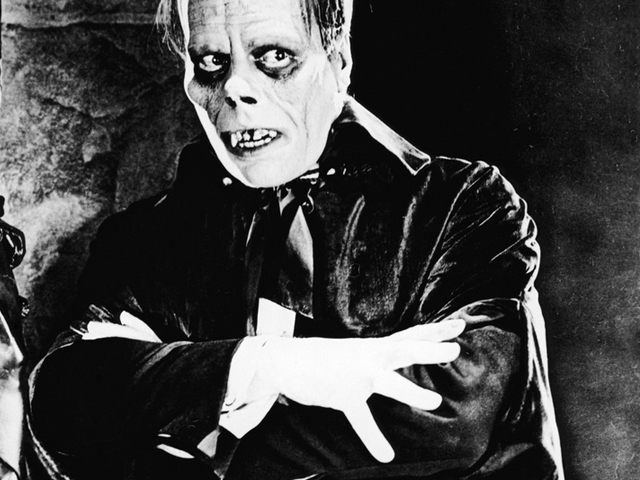Classic Universal Monster #1 - THE PHANTOM OF THE OPERA
During the Halloween season I always try to do a theme for the site. This year I will be talking about classic Universal Horror Films. Universal Pictures was pretty much built on their classic horror movies. All of the horror movies that they have made pretty much set the standard for horror films and the way that we view these classic monsters today. Whenever we hear the name Frankenstein, Wolf Man or Dracula, we automatically associate that monster with what Universal envisioned back in the early days of filmmaking. With Halloween coming up I thought it would be cool to give a list of my favorite Universal Horror films and monsters. The first one I will be discussing is The Phantom of the Opera.
The Phantom of the Opera
This film was made in 1925, during the silent film era of filmmaking. The Phantom of the Opera is a true classic horror film which stars Lon Chaney as the facially deformed masked Phantom that haunts the Paris Opera House, causing murder and mayhem in an attempt to force the management to make the woman he loves a star.
If you've seen the movie you’ve seen how freighting the phantom actually looked. Lon Chaney did the make-up himself, it was even self applied. The phantoms freakish look that was created was kept a secret until the release of the film, and back in the day it scared the shit out of people. The sight was said to have caused some patrons at the premiere to faint.
To achieve the frightening look, Lon Chaney put egg membrane on his eyeballs to give them a cloudy look, and designed the make-up to resemble a skull. He attached a strip of fish skin (a thin, translucent material) to his nostrils with spirit gum, pulled it back until he got the tilt he wanted, then attached the other end of the fish skin under his bald cap. For some shots, a wire-and-rubber device was used, and according to cameraman Charles Van Enger it cut into Chaney's nose and caused a good deal of bleeding. The cheeks were built up using a combination of cotton and collodion. His ears were glued back and the rest was greasepaint shaded in the proper areas of the face.
Chaney's appearance as the Phantom in the film has been the most accurate depiction of the title character, which is based on the description given in the novel, where Erik the Phantom is described as having a skull-like face with a few wisps of black hair on top of his head. As in the novel, Chaney's Phantom has a full facial deformity present since birth, as opposed to the partial facial disfigurement caused by acid or fire (depending on the adaptation) seen in later adaptations of The Phantom of the Opera.
When the film was first released it contained 17 minutes of color footage. All of the opera scenes of Faust, as well as the "Bal Masqué" scene were in an early, two-color form of Technicolor. Only the color version of the Bal Masque exists. In one scene, the Phantom's cape on the rooftop of the opera was colored red using the Handschiegl color process.
For the time period that this film was made, I thought Universal did a great job, and the film was beautifully made. But when the film opened up in theaters the reviews weren't very kind to it. One reviewer said, "The story drags to the point of nauseam." Ouch.
If you haven't seen this original film version of Phantom of the Opera, I suggest you go and check it out! If you have Netflix you can actually download it instantly. Or you can watch the full film on Youtube embeded below.